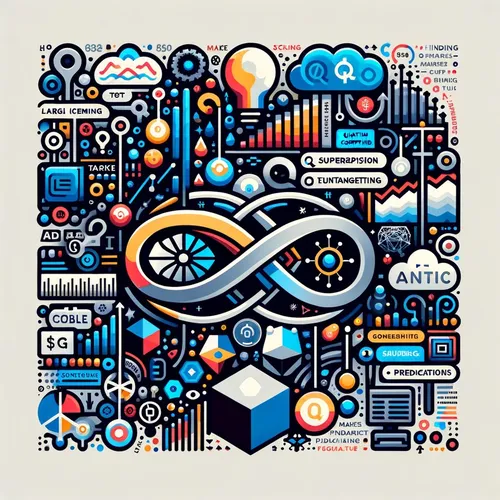Pasqal's Quantum Leap: Revolutionizing Logistics and Beyond | Quantum Market Watch
- Author
- Inception Point Ai
- Published
- Sun 15 Jun 2025
- Episode Link
- https://www.spreaker.com/episode/pasqal-s-quantum-leap-revolutionizing-logistics-and-beyond-quantum-market-watch--66565705
This is your Quantum Market Watch podcast.
Picture this: It's dawn at a bustling European logistics hub, forklifts humming and drones skimming overhead. But today, the real cargo isn't steel or silicon—it’s the future, encoded in the cold, silent logic of quantum bits. I’m Leo, the Learning Enhanced Operator, and you’re tuned into Quantum Market Watch, where each week we dissect the quantum pulse at the heart of global enterprise.
Just days ago, Pasqal—yes, the neutral-atom quantum trailblazer—unveiled a 2025 roadmap that’s already making waves far outside the research labs. The headlines were quick to highlight their plan: a 250-qubit quantum processor primed to demonstrate quantum advantage specifically in logistics, materials science, and machine learning. But let’s telescope in on logistics—the sector that, in my mind, is where the rubber of quantum computing meets the rutted, real-world road.
Imagine a freight optimization problem: thousands of variables, ever-changing constraints, and a combinatorial maze so vast that even the best supercomputers choke. Classical algorithms stagger under such weight, but quantum hardware thrives on complexity, turning it into quantum superposition—a ballet of possibilities unfolding in parallel. Pasqal’s upcoming processors, with their modular, upgradable platforms, aren’t just proof-of-concept; they’re shipping out to high-performance computing centers worldwide this year, ready to wrangle these sprawling logistics networks in real time.
Let’s pause and smell the sub-zero air of a quantum lab. You’d likely see Orion QPUs, cooled close to absolute zero, humming as their neutral atoms are wrangled by lasers. These qubits, suspended almost magically, are manipulated by light rather than wire—a far cry from the copper tangles of yesterday’s silicon. I recall a late-night experiment at Pasqal’s Paris lab: the hum of vacuum pumps, the click of fiber-coupled photonics, a wash of blue-violet as atoms snap into alignment. The room felt like a cathedral for the subatomic, full of latent energy and possibility.
Pasqal’s vision is strategic: by 2030, 10,000 physical qubits and 200 logical qubits, with future systems pushing the envelope via photonic integrated circuits. Why is this modularity and upgradability seismic for logistics? Because the industry is hungry for solutions that can evolve as their supply chains—and global challenges—do. Quantum promises adaptive routing, predictive demand modeling, and near-instant reaction to disruptions. Imagine rerouting a thousand cargo vessels in milliseconds the moment a canal is blocked, or dynamically adjusting an inventory with quantum-enhanced forecasting. The implications for cost savings, sustainability, and resilience are staggering.
This push isn’t happening in a vacuum. Just this week, IBM doubled down on its ambition to deliver the world’s first truly large-scale, fault-tolerant quantum computer, and IQM’s latest report reminds us that hardware alone isn’t enough—the ecosystem needs talented minds and unified software. Industry is realizing: real-world impact flows from hardware, software, and human ingenuity interleaving, much like how entangled qubits weave correlations that defy classical logic.
Visionaries like Christophe Jurczak at Pasqal see quantum not as a replacement for classical computing, but as a catalytic partner. High-performance computing centers, once all racks and cables, are now being retrofitted for quantum-classical hybrids. It’s reminiscent of the early days of electricity: hesitant first steps, and then, suddenly, you can’t imagine life without it.
As quantum advantage edges from theoretical to tangible, logistics stands at the threshold. In the near future, global supply chains may operate more like quantum entangled networks—robust, flexible, and eerily prescient. But this revolution won’t stop at logistics; it’s a template for...
